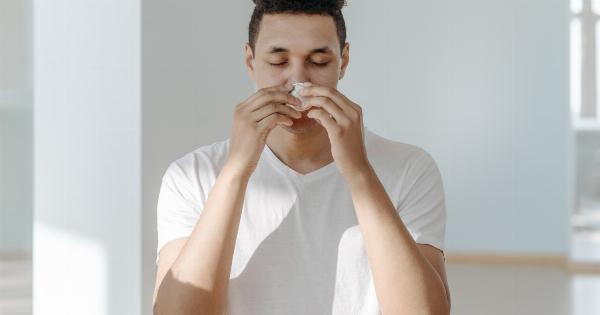Allergic rhinitis, commonly known as hay fever, is a condition that affects millions of people worldwide. It is an allergic reaction to allergens such as pollen, dust mites, pet dander, and mold.
Symptoms of allergic rhinitis include sneezing, itching, nasal congestion, and a runny nose. These symptoms can be bothersome and can significantly affect daily life. While there is no cure for allergic rhinitis, there are several simple and effective ways to manage and find relief from its symptoms.
In this article, we will discuss six simple ways to get relief from allergic rhinitis.
1. Identify and Avoid Allergens
The first step in managing allergic rhinitis is to identify the allergens that trigger your symptoms. Keep a diary of your symptoms and note the times and places where they occur. This will help you pinpoint the specific allergens that you are exposed to.
Once you have identified the allergens, take steps to avoid them as much as possible. For example, if you are allergic to pollen, try to stay indoors when the pollen count is high. Use air purifiers and keep windows closed to reduce pollen exposure.
If you are allergic to dust mites, take measures to reduce dust mite populations in your home by using hypoallergenic bedding and regularly cleaning your living space.
2. Keep Your Surroundings Clean
Cleaning your house regularly can help reduce allergen exposure and provide relief from allergic rhinitis symptoms. Dust and vacuum your home frequently to remove dust, pet dander, and other allergens.
Use a damp cloth or mop to dust surfaces, as dry dusting can stir up allergens and make symptoms worse. Wash bedding and curtains in hot water to kill dust mites and wash away allergens. Regularly clean air filters and vents to prevent the circulation of allergens in your home.
Keeping your surroundings clean can significantly reduce your exposure to allergens and provide relief from symptoms.
3. Nasal Irrigation
Nasal irrigation, also known as nasal rinsing or nasal douching, is a technique used to flush out the nasal passages with a saline solution.
It can help alleviate symptoms of allergic rhinitis by removing allergens, irritants, and excess mucus from the nose. Nasal irrigation can be done using a neti pot, squeeze bottle, or nasal irrigation system. It is important to use sterile, distilled, or properly boiled water to prepare the saline solution to avoid the risk of infection.
Nasal irrigation can be performed once or twice daily to provide relief from nasal congestion, sneezing, and a runny nose.
4. Use Nasal Sprays
Nasal sprays can provide effective relief from allergic rhinitis symptoms by reducing inflammation in the nasal passages.
There are different types of nasal sprays available, including corticosteroid sprays, antihistamine sprays, and decongestant sprays. Corticosteroid nasal sprays reduce inflammation and can be used regularly to prevent symptoms. Antihistamine nasal sprays block the release of histamine, a chemical that triggers allergic reactions.
Decongestant sprays help alleviate nasal congestion by shrinking swollen blood vessels in the nasal passages. It is important to use nasal sprays as directed by your healthcare provider and to consult them if symptoms persist or worsen.
5. Take Oral Antihistamines
Oral antihistamines are commonly used to provide relief from allergic rhinitis symptoms. They block the effects of histamine, which is released during an allergic reaction and causes itching, sneezing, and a runny nose.
Antihistamines can help alleviate these symptoms and provide temporary relief. There are many types of oral antihistamines available over the counter, such as cetirizine, loratadine, and fexofenadine.
It is important to read and follow the instructions on the packaging and consult a healthcare professional if you have any questions or concerns.
6. Discuss Medication Options with Your Doctor
If your symptoms are severe or do not respond to over-the-counter treatments, it is advisable to consult a healthcare professional.
They may recommend prescription medications such as stronger antihistamines, nasal corticosteroids, or other medications to manage your symptoms. They can evaluate your condition, take into consideration any other health conditions you may have, and provide appropriate treatment options.
It is important to follow your doctor’s advice and take medications as prescribed to achieve maximum relief from allergic rhinitis symptoms.
Conclusion
Allergic rhinitis, or hay fever, can be a bothersome condition that affects daily life. While there is no cure for allergic rhinitis, there are several simple ways to find relief from its symptoms.
By identifying and avoiding allergens, keeping your surroundings clean, using nasal irrigation and sprays, taking oral antihistamines, and discussing medication options with your doctor, you can effectively manage allergic rhinitis and improve your quality of life.



























